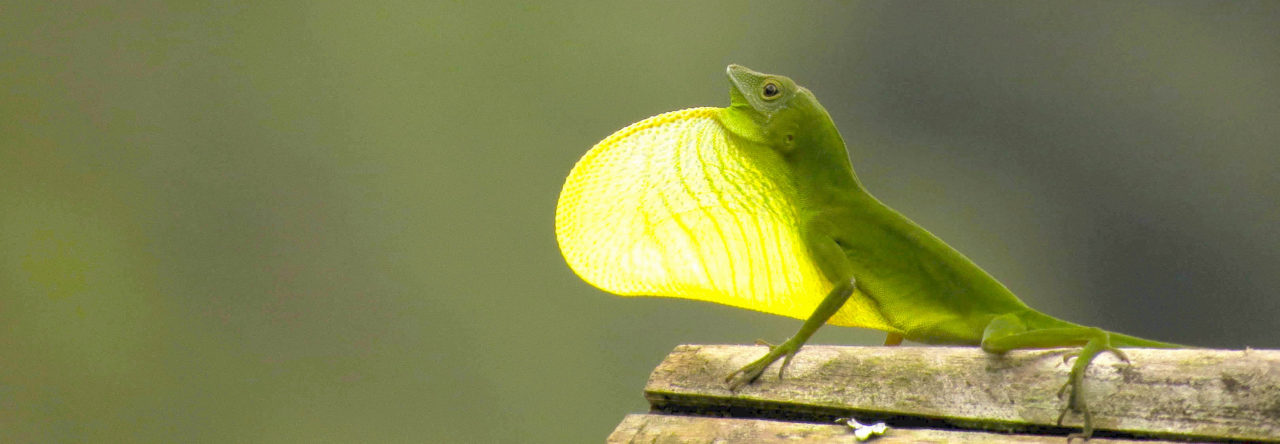Monkey lizards (Polychrus) are unique among Neotropical arboreal lizards in having strikingly long whip-like tails, as well as long limbs and digits. Interestingly, they resemble Old World chameleons in both morphology and behavior: slow-moving lizards with a laterally compressed body and cone-shaped eyes with partially fused eyelids. Although their phylogenetic position in the iguanid tree of life remains controversial, many authors argue that monkey lizards are the living sister taxon of anoles.
In a study published last week in PlosONE, we present a molecular phylogeny of all eight currently recognized species of Polychrus based on the largest geographic sampling to date. Our species tree places P. acutirostris as sister to all other species of Polychrus. While the phylogenetic position of P. gutturosus and P. peruvianus is poorly resolved, P. marmoratus and P. femoralis are strongly supported as sister to P. liogaster and P. jacquelinae, respectively. Moreover, recognition of the recently described P. auduboni and P. marmoratus sensu stricto as distinct species suggests that the populations of “P. marmoratus” from the Amazon and the Atlantic coast in Brazil represent separate species. Finally, species delimitation analyses suggest, among other things, that the populations of P. femoralis from the Tumbes region (southwestern Ecuador and northwestern Peru) might belong to a cryptic undescribed species.



















